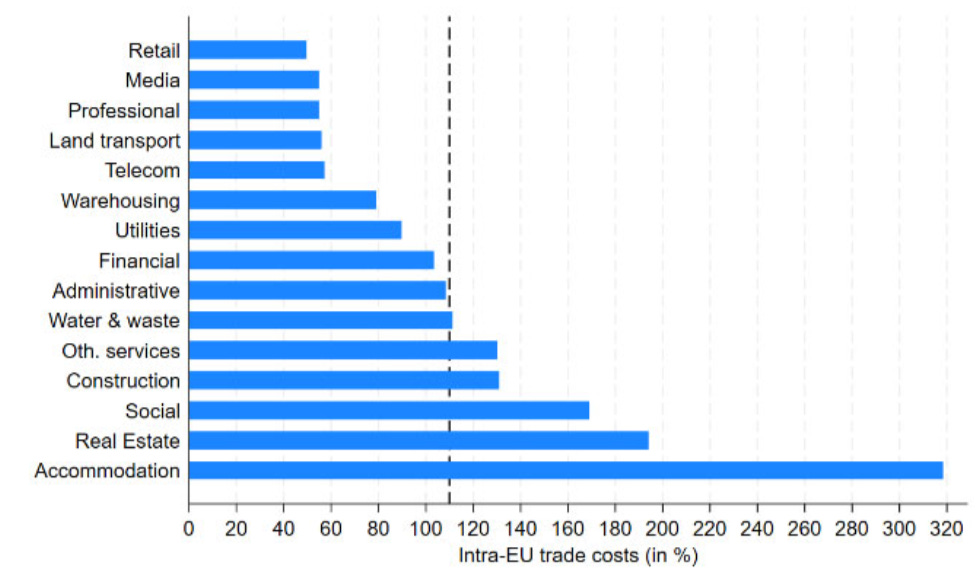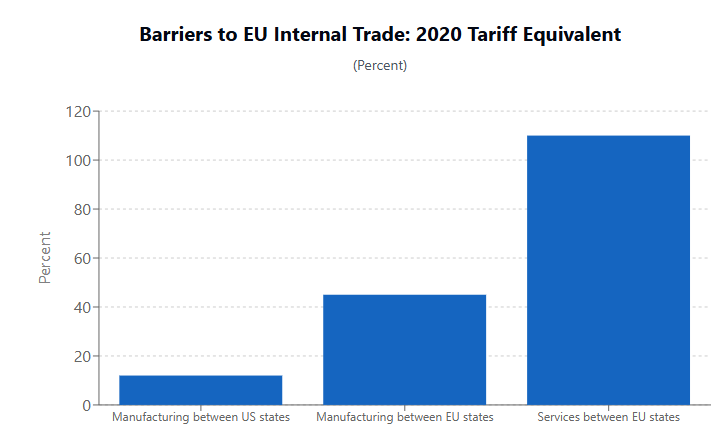From Silicon Continent, May 14:
The IMF puts the hidden cost of trading goods inside the EU at the equivalent of a 45% tariff. For services the figure climbs to 110%, higher than Trump’s “Liberation day” tariffs on Chinese imports—measures many saw as a near-embargo.
Source: IMF October 2024. Page 19. Chart 4
These barriers are not direct taxes. Instead, a construction company might find its building materials or plans, though EU-compliant, still need costly national checks. A foreign university looking to set up a campus, or a care home provider wanting to expand, could face major delays getting their staff's qualifications accepted or dealing with complex local licensing for their buildings.

IMF: A Recovery Short of Europe’s Full Potential. Note 1. October 2024.
According to the IMF, since the mid-90s, trade costs for goods dropped 16% for non-EU imports, but only 11% for trade within the EU. As a result, actual trade between EU countries is less than half that between US states. Because growing at home is so hard, EU firms must often look beyond the Union. Today, the EU's internal and external services trade are roughly the same size as a share of our economy. In a true single market, internal trade should be much larger. In a world where scale is ever more vital (services include such scale-intensive business as AI, finance, IT) this fragmentation of the single market is very damaging....
....MUCH MORE
